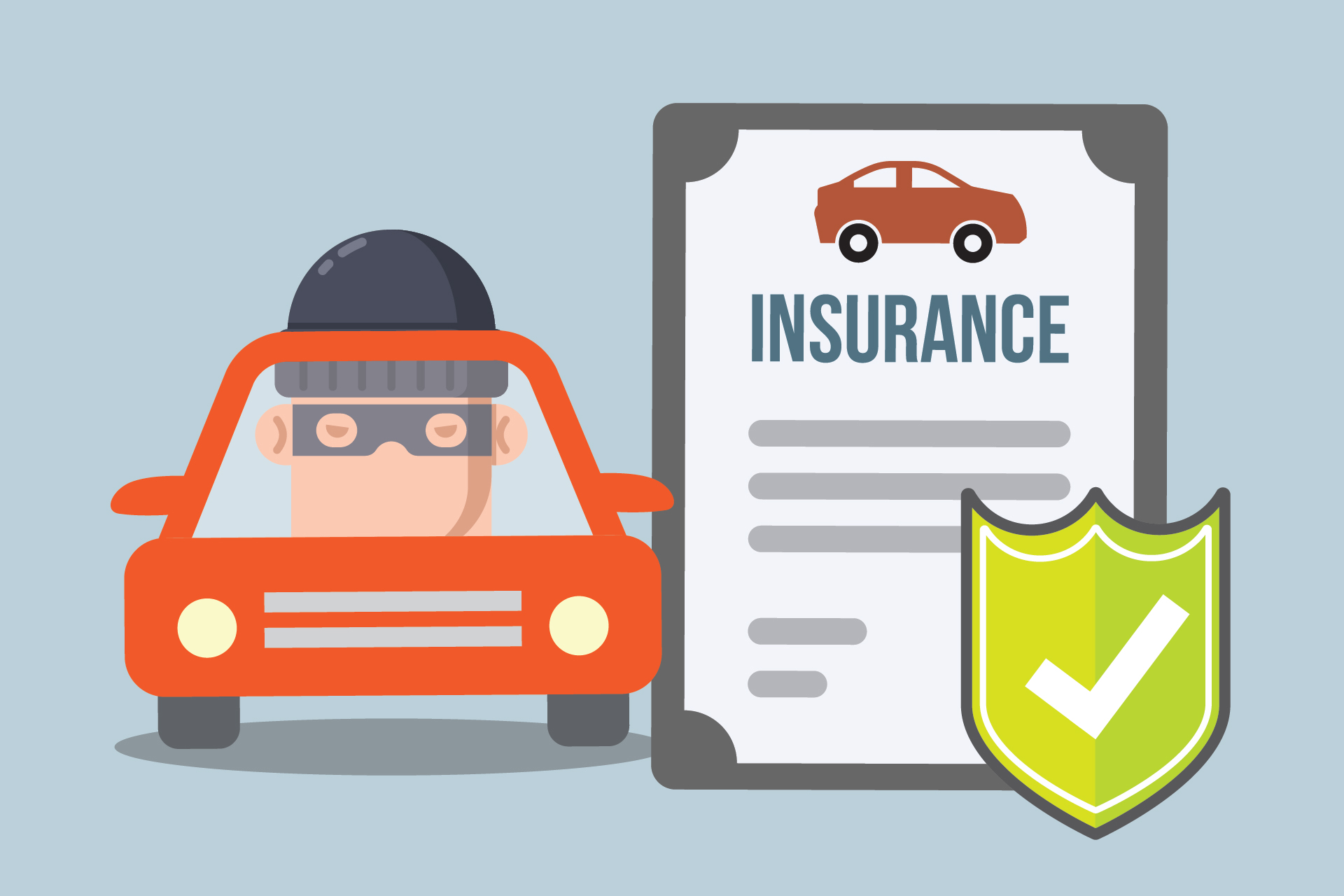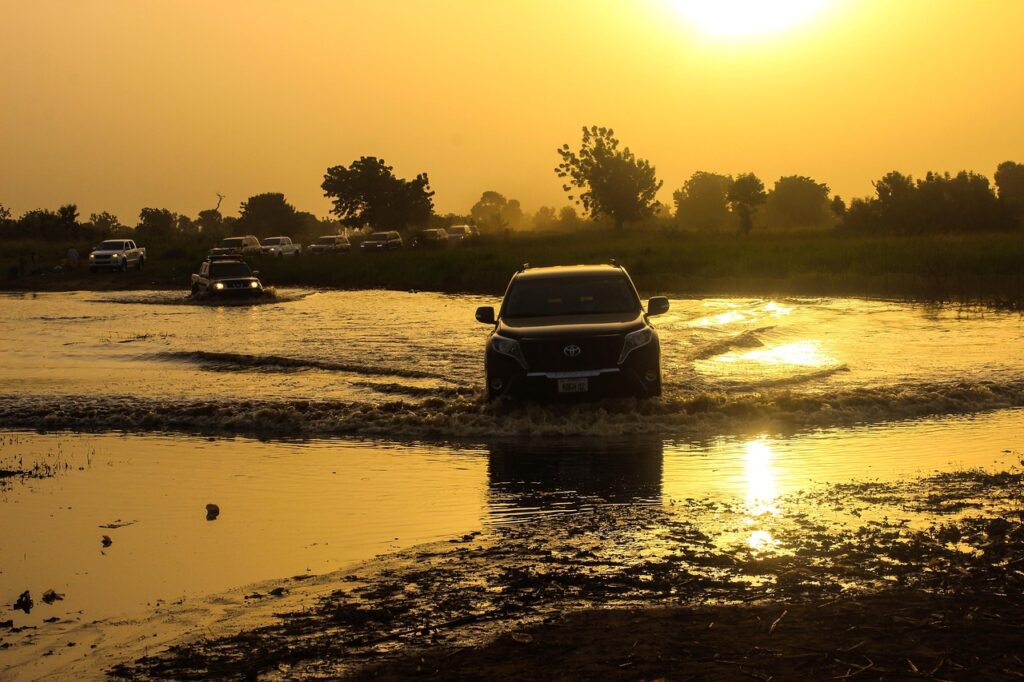
Renting a car while traveling abroad is an unparalleled adventure, a ticket to unlocking hidden gems, exploring beyond the well-trodden tourist paths, and experiencing destinations with ultimate freedom and flexibility. The open road calls, promising unforgettable memories and the thrill of discovery at your own pace. However, this exhilarating opportunity can quickly turn into a logistical nightmare if you’re not armed with the right information and a keen eye for potential pitfalls.
Indeed, the complexities of international car rentals are numerous. From deciphering dense rental agreements to navigating foreign driving laws and unexpected fees, the process can be fraught with challenges that may lead to unexpected costs, frustrating delays, or even legal trouble. But don’t let that deter you! With a little preparation and insider knowledge, you can sidestep these common blunders and ensure your journey is as smooth as the autobahn.
This comprehensive guide is designed to equip you with the essential know-how, breaking down the most frequent mistakes travelers make when hiring vehicles overseas. We’ll provide you with direct, usable advice, practical tips, and step-by-step solutions to help you avoid these common errors. By understanding what to look out for, you can embark on your international driving adventures with confidence, ready to embrace the journey without the stress of unforeseen complications.

1. **Not Checking Driver’s License Requirements / International Driving Permit (IDP)**One of the most fundamental yet frequently overlooked aspects of renting a car abroad is ensuring your driver’s license is valid for international use. Many travelers mistakenly assume that their domestic driver’s license will automatically be accepted in any country they visit. This assumption, while convenient, is a significant gamble that can derail your travel plans before you even put the key in the ignition. Without the correct documentation, a rental agency may flat-out refuse to hand over the keys, leaving you stranded.
Beyond the rental counter, the implications can be far more serious. Some countries legally require an International Driving Permit (IDP) in addition to your regular license. If you’re pulled over by local authorities without one, you could face hefty fines, legal issues, or even have your rental car impounded. Worse still, in the event of an accident, your insurance coverage could be rendered invalid if you weren’t legally permitted to drive, leading to significant financial liability for damages and injuries.
To avoid this headache, always verify the specific driver’s license requirements for every country on your itinerary, especially for destinations outside of Europe and North America. The solution is straightforward: obtain your IDP well in advance from your local automobile association. It’s an inexpensive document, essentially a translation of your existing license, and acts as a crucial legal safeguard. When you hit the road, always carry both your original driver’s license and your International Driving Permit to ensure you’re fully compliant with local regulations.

2. **Overlooking Insurance Coverage Gaps and Misunderstanding Policies (CDW/LDW)**Navigating the labyrinth of rental car insurance policies is arguably one of the most confusing and critical challenges travelers face abroad. Many renters make the costly mistake of relying solely on their existing credit card or travel insurance without fully understanding what is—or isn’t—covered. This oversight can expose you to significant financial risks, as basic rental insurance often comes with high deductibles and limited protection, leaving you vulnerable to substantial out-of-pocket expenses.
The alphabet soup of acronyms like CDW (Collision Damage Waiver) and LDW (Loss Damage Waiver) can be particularly misleading. These waivers are often misunderstood as comprehensive insurance, but they typically only cover damage to the rental vehicle itself, and even then, usually come with a high ‘excess’ or deductible. This means you could still be responsible for the first several hundred or even thousand euros of damage, regardless of who was at fault. Third-party liability, which covers damage to other vehicles or property, is frequently a separate policy altogether and is mandated in many countries.
Before you sign anything, take the time to thoroughly understand what’s included in the rental agreement. Contact your credit card company and travel insurance provider to clarify the specifics of their coverage: What types of vehicles and countries are covered? Are you protected against damage, theft, or third-party claims? If there’s any uncertainty, or if you prefer absolute peace of mind, seriously consider purchasing full coverage directly from the rental agency or a reputable third-party provider. Always clarify the exact coverage and the amount of any excess or deductible before you accept the policy.
3. **Failing to Inspect the Vehicle Thoroughly and Documenting Damages**Imagine this scenario: you’re eager to start your road trip, you grab the keys, and drive off the lot without a second glance at your rental car. This common oversight is a prime setup for a frustrating and costly experience upon return. By not meticulously documenting the vehicle’s condition before you drive off, you could easily be held responsible for scratches, dents, or other damages that were already present when you picked up the car, turning a minor imperfection into a major billing dispute.
The laid-back demeanor of a rental agent during pickup can often mask a much stricter approach at drop-off. The same agent who seemed to skim over the damage checklist might suddenly scrutinize every inch of the car for new imperfections. In the absence of your own documented proof, their word often holds sway, and you could find yourself charged for repairs that weren’t your fault. These charges don’t always go towards actual repairs; sometimes, they simply inflate the company’s profits, adding insult to injury.
To safeguard yourself, perform a comprehensive walk-around inspection before you accept the vehicle. Take clear, timestamped photos or videos of any and all existing damage—no matter how minor—both inside and out. Ensure that the rental agent acknowledges these damages and marks them clearly on your rental agreement form. Repeat this detailed inspection process when you return the car, taking additional photos or videos to document its condition at drop-off. This diligence creates an irrefutable record, protecting you from unwarranted charges and ensuring a fair assessment.
Read more about: The Unexpected Urban Conundrum: Why Owning a Car in the City Can Become a Significant Liability
4. **Not Reading the Fine Print for Hidden Fees and Surcharges**Clicking “book now” or signing a rental agreement without thoroughly reviewing the terms and conditions is a common trap that can lead to a cascade of unexpected and budget-busting charges. The fine print in rental contracts is notoriously complex, often concealing numerous additional fees and surcharges that can significantly inflate your initial quoted price, turning an seemingly affordable rental into an expensive ordeal. Many travelers gloss over these details, only to be hit with surprises later.
These hidden charges can manifest in various forms: mileage limits (where every mile beyond a cap is charged at an exorbitant rate), unfavorable fuel policies, extra driver fees, cross-border restrictions that incur additional charges, young driver fees (for those typically under 25), and premiums for picking up at an airport location. There can also be fees for GPS devices, child seats, toll passes, or even out-of-hours drop-off, all adding up quickly and unexpectedly.
To avoid these unwelcome surprises, it is absolutely essential to read the rental agreement carefully, line by line. Don’t hesitate to ask the rental company for a detailed breakdown of all charges before confirming your booking. Clarify every ambiguous point, especially concerning mileage limits, the fuel policy (full-to-full is usually best), and any potential extra fees that might apply to your specific travel plans. Understanding these elements upfront ensures you have a clear picture of the total cost and helps you budget effectively, preventing nasty shocks when the final bill arrives.
5. **Misunderstanding Fuel Policies and Not Refueling Correctly**The fuel policy for your rental car might seem like a minor detail, but misunderstanding it can lead to some of the most infuriating and easily avoidable extra charges. Many rental companies have varying fuel policies, and if you don’t clarify yours, you could end up paying a hefty premium for fuel that you could have bought much cheaper yourself. This mistake is particularly frustrating because it’s entirely within your control to prevent.
Common policies include “full-to-full,” where you pick up the car with a full tank and return it full; “pre-purchase,” where you buy a tank of gas upfront from the agency (often at an inflated price) and can return it empty; or “full-to-empty,” where you pay for a full tank and return it with as little fuel as possible. The “full-to-full” option is almost always the most economical, as it allows you to refuel at a local gas station at competitive prices, rather than the significantly marked-up rates charged by the rental company.
Always clarify the fuel policy before you leave the rental office and make sure to adhere to it meticulously. If your policy is “full-to-full,” plan your journey to include a stop at a gas station near the return location. It’s wise to keep your refueling receipt as proof, just in case any discrepancies arise upon return. By taking a few minutes to refuel yourself, you can easily save a significant amount of money that would otherwise go straight into the rental company’s profits, ensuring a hassle-free and cost-effective return process.
6. **Neglecting to Book in Advance or Secure the Reservation**The allure of spontaneity is strong, but when it comes to international car rentals, last-minute bookings can often lead to unnecessary stress, higher prices, and severely limited vehicle availability. Many travelers underestimate the benefits of booking their rental car well in advance, assuming they can simply pick up a suitable vehicle upon arrival. This oversight can quickly turn into a nightmare, especially during peak travel seasons or in popular destinations.
Furthermore, some travelers make the mistake of reserving a car without securing it with a deposit or an upfront payment. While it’s not a common occurrence, there have been instances where unscrupulous rental agencies cancel unsecured bookings at the last minute, especially when they realize they can rebook the vehicle at a much higher price to another customer. This leaves you scrambling to find alternative transportation, potentially delaying your trip and forcing you into a more expensive deal under pressure.
To avoid this precarious situation, it’s highly advisable to book your rental car as far in advance as your travel plans allow. Early bookings often come with better rates, a wider selection of vehicles, and access to promotional offers, which can significantly reduce your overall rental cost. More importantly, paying for the booking upfront or placing a deposit provides much greater protection against your reservation being unexpectedly cancelled. This small act of foresight transforms your penciled-in reservation into a concrete booking, giving you peace of mind and a seamless start to your journey.
Read more about: The Ultimate Guide to Washing Machine Longevity: 15 Expert-Backed Tips for Years of Trouble-Free Laundry

7. **Underestimating Local Driving Laws, Etiquette, and Road Conditions**One of the most dangerous assumptions travelers make when renting a car abroad is that driving will be just like driving at home. Each country boasts its own distinct set of driving laws, unique road signage, unspoken etiquette, and varying road conditions. Ignorance of these local nuances is not just an inconvenience; it can lead to significant fines, serious accidents, or, in the worst-case scenario, invalidate your insurance, leaving you personally liable for damages.
For instance, some countries have strict rules about headlight usage during the day, specific right-of-way laws that differ from what you’re accustomed to, or unique ways of navigating roundabouts. Road conditions themselves can vary dramatically, from well-maintained highways to poorly paved rural roads, congested city centers, or mountain passes with specific hazards. Failing to understand these factors can make for a very stressful and potentially dangerous driving experience, jeopardizing your safety and enjoyment.
Before you even get behind the wheel, invest some time in researching the local traffic laws, typical road habits, speed limits, and common road signs of your destination. Familiarize yourself with the quality of roads and potential weather-related hazards. Understanding local driving etiquette, such as how drivers merge or signal, can also make a huge difference in staying safe and confident. Being prepared for these unique conditions allows you to plan your routes more effectively, allocate extra travel time if necessary, and ultimately ensures a safer and more enjoyable driving adventure abroad.
Now that you’re well-versed in avoiding the initial blunders of international car rentals, it’s time to master the road ahead. This second section, ‘Mastering the Road Ahead – Preventing Costly Blunders and Enhancing Your Journey’, will guide you through the remaining common pitfalls, ensuring your overseas driving experience is not just smooth, but truly optimized for confidence and savings. Let’s delve into these vital tips to elevate your travel game.

8. **Choosing the Wrong Vehicle Type**Many travelers, understandably keen to save a few bucks, often make the mistake of selecting a rental car based solely on the cheapest available price. This seemingly smart financial decision can quickly backfire, however, if the vehicle doesn’t align with your actual travel needs, leading to discomfort, inconvenience, and even unforeseen costs down the line. It’s a common oversight that overlooks the practicalities of your journey in favor of the bottom line.
Ignoring critical factors such as the number of passengers, the amount of luggage you’ll be carrying, and the specific driving terrain of your destination can turn an exciting road trip into a cramped, frustrating experience. Imagine cramming a family of four and their suitcases into a subcompact car for a multi-day journey, or attempting to navigate rugged, unpaved roads in a low-clearance sedan. These scenarios highlight how a mismatch between vehicle and travel plan can significantly diminish your overall experience.
The solution is to approach vehicle selection with a strategic mindset, prioritizing suitability over initial cost. If you’re traveling with family or a larger group, opt for a spacious vehicle with ample storage. For destinations known for rough or mountainous terrain, an SUV or a 4WD vehicle will provide the necessary capability and safety. Additionally, consider fuel efficiency, especially for longer distances, as this can have a substantial impact on your overall budget. Choosing the right car ensures a comfortable, safe, and stress-free journey, making the slight upfront cost difference well worth it.
Read more about: The 15 Hardy Coupes That Can Easily Reach a Quarter Million Miles Unchallenged

9. **Overlooking Additional Fees for Extras and Returns**While Section 1 covered the importance of reading the general fine print, many specific additional fees for extras and certain return policies still catch travelers off guard. These charges, often buried in the terms and conditions or only revealed at the counter, can significantly inflate your rental cost. It’s a widespread problem where what appears to be a good deal online morphs into an unexpectedly expensive reality once you reach the rental office.
Such charges manifest in various forms: airport surcharges, which are premiums for the convenience of picking up at an airport; young driver fees, often applied daily to those under 25; and costs for seemingly minor extras like GPS devices or child seats. Furthermore, a particularly common and costly oversight is the one-way rental fee. While incredibly convenient for itineraries that involve picking up a car in one city and dropping it off in another, these fees can be substantial, sometimes running into hundreds or even thousands of dollars, particularly for international one-way trips.
To sidestep these budget-busters, always request a detailed breakdown of all potential charges before you finalize your booking. Clarify specific fees for any extras you might need. If your itinerary allows, consider picking up your rental from an off-airport location to avoid those premium surcharges. For one-way travel, explicitly inquire about the associated fees upfront and factor them into your overall budget. In some cases, it might even be more economical to return the car to its original location and arrange alternative transport for the remainder of your journey, preventing a painful cost addition to your rental.

10. **Ignoring Local Road Conditions**While we touched on understanding local driving laws and etiquette in Section 1, it’s equally crucial not to ignore the physical reality of local road conditions. Travelers often assume that roads will be uniformly well-maintained, smooth, and easily navigable, much like those they are accustomed to at home. This assumption can lead to uncomfortable, challenging, and potentially dangerous driving situations, compromising both your safety and your enjoyment.
Road conditions can vary drastically, not just from country to country, but even within different regions of the same destination. You might encounter anything from impeccably paved highways to poorly maintained rural routes, intensely congested city centers, or winding mountain passes with unexpected hazards like gravel sections or sheer drops. Failing to anticipate these diverse conditions can make for a very stressful driving experience, delaying your travel and potentially putting you in precarious situations.
Before embarking on your journey, dedicate some time to researching the typical road quality, traffic patterns, and common weather-related hazards for your specific destination and planned routes. Understanding these factors will allow you to plan your itinerary more effectively, perhaps allotting extra travel time for certain segments or even opting for alternative transportation if conditions are truly prohibitive. Being prepared for varying road conditions ensures you can drive with greater confidence and make informed decisions, contributing to a much safer and more enjoyable adventure abroad.
Read more about: Master Your Commute: 12 Life-Changing Strategies to Slash Stress and Boost Your Well-being Every Day
11. **Forgetting to Check the Rental Company’s Reputation**When faced with a myriad of rental car options, it’s tempting to simply pick the cheapest deal or the most recognizable brand. However, making a choice based solely on price without delving into the rental company’s reputation is a significant oversight. Not all rental companies offer the same standard of service, transparency, or vehicle reliability, and a seemingly good deal can quickly unravel into a frustrating and costly experience.
Choosing a less reputable company might expose you to poor customer service, unreliable or poorly maintained vehicles, or even a higher likelihood of encountering those dreaded hidden fees that were discussed earlier. Stories abound of travelers facing pushy sales tactics, lengthy disputes over minor damages, or receiving a car that doesn’t meet their expectations for safety or cleanliness. Your peace of mind, and indeed your safety, are too valuable to leave to chance.
To safeguard yourself, always research the rental company’s reputation before booking. Start by reading recent online reviews from multiple sources and seek recommendations from fellow travelers or trusted travel forums. Look for consistent feedback regarding transparency in pricing, responsiveness of customer service, and the overall condition of their vehicle fleet. A reputable company will provide clear terms and conditions, responsive support channels, and well-maintained cars, ensuring that your rental experience is as smooth and hassle-free as possible from start to finish.
Read more about: Aventon Electric Bikes Chart a Course for the Future: Unveiling Next-Generation Adventures and Pioneering Innovation

12. **Overpacking or Underpacking for Your Vehicle**Packing is an art form, and when renting a car overseas, it becomes even more critical to match your luggage strategy to your vehicle choice. Many travelers either overpack, leading to cramped conditions and potential safety hazards, or underpack, finding themselves without essential items. This often-overlooked mistake directly impacts your comfort, convenience, and the overall functionality of your rental car during your trip.
Overpacking can mean struggling to fit all your bags into the trunk, forcing you to utilize passenger seats for luggage, which can obstruct views, reduce comfort for occupants, and become a dangerous projectile in the event of sudden braking. Conversely, underpacking might leave you scrambling for necessities that could have easily been brought from home, leading to unexpected purchases and disruptions to your itinerary. It’s about finding that sweet spot where you have everything you need without burdening your vehicle.
To avoid this packing predicament, begin by considering the size and luggage capacity of your chosen rental car. Be realistic about what you truly need versus what you *might* need. Pack efficiently, utilizing packing cubes and prioritizing essential items. Remember to keep crucial documents like your driver’s license, rental agreement, and insurance papers easily accessible, not buried under a pile of clothes. A well-packed car ensures a more comfortable journey, reduces stress, and maintains safety, allowing you to focus on the adventure at hand.

13. **Underestimating the Importance of GPS and Navigation**In our smartphone-reliant world, it’s easy to assume your phone’s navigation app will be sufficient for all your international driving needs. However, underestimating the importance of dedicated GPS and reliable navigation tools, especially in unfamiliar territories, is a mistake that can quickly lead to frustration, delays, and even getting thoroughly lost. International roads, language barriers, and variable mobile connectivity pose unique challenges that a simple smartphone app might not overcome.
While your phone is undoubtedly useful, areas with limited or no data connectivity will render online maps useless, leaving you directionless. Even with connectivity, navigating complex intersections, deciphering foreign road signs, or understanding local driving instructions can be significantly harder when relying solely on a small screen. Getting lost not only wastes valuable travel time but can also be stressful and potentially lead you into unsafe areas.
To ensure you stay on course, always have a robust navigation strategy. Consider renting a GPS device directly from the car rental company, especially if you anticipate driving in remote areas. A more budget-friendly and often effective alternative is to download offline maps of your entire destination onto your smartphone before you leave home. Familiarize yourself with the navigation system, whether it’s a dedicated device or an app, before you even set off. Having a reliable backup plan for navigation ensures you minimize the risk of getting lost, save precious time, and maintain a stress-free driving experience throughout your international adventure.
14. **Not Considering Alternatives or Leveraging Rewards**Finally, one of the biggest mistakes many travelers make is blindly assuming that renting a car is always the best or only option for getting around. They also often overlook valuable opportunities to reduce costs or enhance their experience through loyalty programs and memberships. Every trip is unique, and what works perfectly for one journey might be an unnecessary expense or even a hindrance for another. It’s crucial to approach transportation decisions with an open mind and a savvy approach to perks.
By automatically defaulting to a rental car, you might be signing up for unnecessary expenses like parking fees, fuel costs, and potential tolls, especially in cities with excellent public transportation networks. For example, a day trip to a major European capital might be far more efficient and economical using its extensive metro or train system than dealing with city traffic and expensive parking. Overlooking the possibility of taxis, ride-sharing services, or intercity buses can lead to redundant costs and added logistical headaches.
Read more about: Navigating the Rough Road: The 13 Critical Reasons Why Used Car Dealerships Fail and How to Thrive
Before booking, take a moment to research the public transportation options at your destination and compare them against the true ‘all-in’ cost of a rental car. Furthermore, don’t forget to leverage any rewards programs or memberships you might hold. Many car rental companies have partnerships with airlines, hotel chains, or credit card companies, offering perks like free upgrades, discounted rates, or even free rental days if you use points. Memberships like AAA can also provide access to free add-ons like child seats or waive additional driver fees. A little foresight here can translate into significant savings and a more tailored, enjoyable travel experience.









